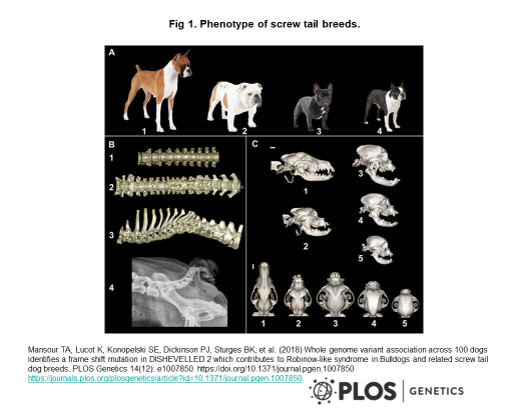"We do this for the dogs' sake"
I have frequently heard people say that what they are doing is 'for the dogs'' when it might seem it is mainly for their own goals.- but the Swedish Kennel Club has posted an informative video about the Breed Specific Instructions that makes it clear that the only goal with this program is to promote the health and welfare of dogs. Renowned judges explain why they think their role in promoting health and welfare is so important. We have lots of information on the BSI and the Swedish Breed-Specific Breeding Strategies, in general (as well as, lists of breeds with breed specific strategies from several countries on DogWellNet.com and this video really puts it all in perspective.
 We all know that health and welfare of dogs is the responsibility of all stakeholders in the dog world and judges are no exception. The impact of dog shows and the awarding of wins to specific dogs has a big impact on the public perception of pedigree dogs, in general, and also of specific breeds. It is crucial that dogs that achieve success in these increasingly 'prime time', public displays epitomize the best of the best - not just in looks, but also in health. All organizations licensing dog judges insist on 'judges education' but the BSI program takes it a step further, insisting that judges take responsibility in only promoting dogs without physical manifestations of conditions/ conformations that may limit health and welfare. The BSI process is followed in all Scandinavian countries, as well as several other European countries. A key part of the BSI process is the completion of reports by the judges (discussed in the video); and here is a link to an example of a report required for German Shepherd Dogs by Rad van Beheer in The Netherlands. The Canadian Kennel Club instituted an observer program in 2017, but I haven't found full details on the goals of the program. The AKC has a Field Rep program and, although at the moment I do not think these North American programs have breed-specific requirements similar to the BSI, clearly there are structures in place that could facilitate such an approach.
We all know that health and welfare of dogs is the responsibility of all stakeholders in the dog world and judges are no exception. The impact of dog shows and the awarding of wins to specific dogs has a big impact on the public perception of pedigree dogs, in general, and also of specific breeds. It is crucial that dogs that achieve success in these increasingly 'prime time', public displays epitomize the best of the best - not just in looks, but also in health. All organizations licensing dog judges insist on 'judges education' but the BSI program takes it a step further, insisting that judges take responsibility in only promoting dogs without physical manifestations of conditions/ conformations that may limit health and welfare. The BSI process is followed in all Scandinavian countries, as well as several other European countries. A key part of the BSI process is the completion of reports by the judges (discussed in the video); and here is a link to an example of a report required for German Shepherd Dogs by Rad van Beheer in The Netherlands. The Canadian Kennel Club instituted an observer program in 2017, but I haven't found full details on the goals of the program. The AKC has a Field Rep program and, although at the moment I do not think these North American programs have breed-specific requirements similar to the BSI, clearly there are structures in place that could facilitate such an approach.
A striking comment in the video was that judges must be on the lookout for negative trends and help ensure that these do not progress. I am not a judge; I briefly showed dogs in the distant past; and I am often concerned by what I see at show events.
 I was recently at the National Specialty of the French Bulldog Club of America in Louisville, KY, USA, at the end of October 2018. It was an honor to talk to the club members who are concerned about health issues in this breed. However, I was confused by seeing many dogs being shown that clearly had no actual tails (maybe 2 coccyx vertebrae), clearly so in the eyes of this veterinarian, and described as such by the competitors as a recent trend. And yet, I was repeatedly assured that 'the standard specifies that a French Bulldog must have a tail'.
I was recently at the National Specialty of the French Bulldog Club of America in Louisville, KY, USA, at the end of October 2018. It was an honor to talk to the club members who are concerned about health issues in this breed. However, I was confused by seeing many dogs being shown that clearly had no actual tails (maybe 2 coccyx vertebrae), clearly so in the eyes of this veterinarian, and described as such by the competitors as a recent trend. And yet, I was repeatedly assured that 'the standard specifies that a French Bulldog must have a tail'.
Such a contradiction, such an extreme, would presumably not be allowed, under the BSI, especially when this is not a cosmetic change, but a structural one. It is particularly concerning given that we know that French Bulldogs have an increased risk for spinal abnormalities and a new paper suggests that selection for screw tails may have led to a syndrome of abnormalities in both English and French Bulldogs. Every one who has bred dogs knows that focus on one characteristic, especially going for extremes, can lead to occurrence of unforeseen consequences. Nothing happens in isolation with breeding and selection.
Congrats to the Swedes for this video and I hope it will encourage more judges to take an approach like this - regardless of whether or not they are under a requirement to do so. Because our activities really should be 'for the dogs' sake'.
 Donate
Donate

0 Comments
Recommended Comments
There are no comments to display.